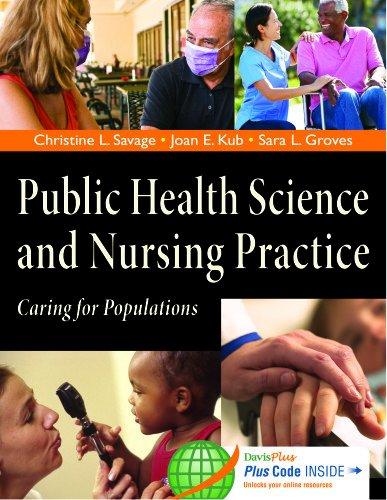Description
Public Health Science And Nursing Practice By Christine Savage, Joan Kub -Test Bank
Chapter 5: Health Program Planning
MULTIPLE CHOICE
1.A community’s public health nurses (PHNs) are working on building community capacity, which includes all of the following except:
|
A. |
Organizing assets and resources to improve the health of a community |
|
B. |
Assessing how many people the community clinic will contain at one time |
|
C. |
Working in partnerships and supporting decision making |
|
D. |
Identifying root causes of health problems and working on interventions and outcomes |
ANS: B
Objective: 2. Identify components of different health planning models.
pp. 109-110
Heading: Introduction
Integrated Processes: Nursing Process
Client Need: Health Promotion and Maintenance
Cognitive Level: Applying [Application]
Concept: Promoting Health; Collaboration
Difficulty: Easy
|
Feedback |
|
|
A |
Community capacity refers to the ability of a community to work together to organize their available resources in order to aid the area. |
|
B |
Assessing the capacity of a clinic is not a part of building community capacity. |
|
C |
It can be quite self-sustaining when the community is empowered to make their own decisions about interventions and outcomes. |
|
D |
Through collaboration, the community can recognize, evaluate, and address key problems. |
PTS: 1 CON: Promoting Health | Collaboration
2.Due to health concerns for high-risk populations, Healthy People 2020 includes as one of its main goals:
|
A. |
To provide better insurance programs |
|
B. |
To have collaboration among governmental agencies |
|
C. |
To provide access to preventive health-care services |
|
D. |
To improve assessment of services |
ANS: C
Objective: 1. Discuss the use of Healthy People 2020 in health program planning.
pp. 111-116
Heading: Overview of Health Program Planning > Health Program Planning Models
Integrated Processes: Nursing Process
Client Need: Health Promotion and Maintenance
Cognitive Level: Comprehension [Understanding]
Concept: Promoting Health
Difficulty: Easy
|
Feedback |
|
|
A |
The Healthy People 2020 document provides structure to bring a uniformity of care but not necessarily access to insurance. |
|
B |
Collaboration among agencies is not a distinct goal of Healthy People 2020. |
|
C |
The quickest method to aid high-risk populations is to give preventative health care and to avoid secondary and tertiary health problems. |
|
D |
Assessment of services does not directly improve health care for high-risk populations. |
PTS:1CON:Promoting Health
3.A public health nursing instructor educates a class that the Predisposing, Reinforcing and Enabling factors, and Causes in Educational Diagnosis and Evaluation (PRECEDE) component of the PRECEDE-PROCEED begins with:
|
A. |
An examination of administrative and organizational issues |
|
B. |
A comprehensive community assessment |
|
C. |
Preventative programs |
|
D. |
The implementation of behavior change |
ANS: B
Objective: 2. Identify components of different health planning models.
pp. 111-116
Heading: Overview of Health Program Planning > Health Program Planning Models
Integrated Processes: Teaching/Learning
Client Need: Health Promotion and Maintenance
Cognitive Level: Application [Applying]
Concept: Promoting Health; Nursing Roles
Difficulty: Easy
|
Feedback |
|
|
A |
When the assessment phase is complete, the model provides guidance on how to examine the administrative and organization issues that need to be dealt with before implementing a program aimed at improving the community’s health. |
|
B |
When a community uses the PRECEDE process, it begins with a comprehensive community assessment process. |
|
C |
When a community uses the PRECEDE process, it begins with a comprehensive community assessment process. |
|
D |
The PRECEDE-PROCEED model is meant as a model for program planning which comes before program implementation. |
PTS: 1 CON: Promoting Health | Nursing Roles
4.In general, nurses using the program planning model would begin by:
|
A. |
Assessing the community |
|
B. |
Clarifying the health problem |
|
C. |
Understanding the underlying factors that contribute to the problem |
|
D. |
Developing an intervention |
ANS: B
Objective: 2. Identify components of different health planning models.
pp. 111-116
Heading: Overview of Health Program Planning > Health Program Planning Models
Integrated Processes: Nursing Process
Client Need: Health Promotion and Maintenance
Cognitive Level: Application [Applying]
Concept: Promoting Health
Difficulty: Easy
|
Feedback |
|
|
A |
The second step is assessing the various aspects of the community experiencing the health problem. |
|
B |
The first step to program planning is clearly stating the health problem that will be addressed by the program. |
|
C |
The third step is realizing the causes of the health problem. |
|
D |
The last step is developing an intervention to improve the health of the community. |
PTS:1CON:Promoting Health
5.A group of public health officials want to use the logic model for program design. In this model, when a program’s intended outcome is achieved, this is referred to as successful:
|
A. |
Input |
|
B. |
Output |
|
C. |
Outcome |
|
D. |
Impact |
ANS: B
Objective: 2. Identify components of different health planning models.
pp. 111-116
Heading: Overview of Health Program Planning > Health Program Planning Models
Integrated Processes: Nursing Process
Client Need: Health Promotion and Maintenance
Cognitive Level: Application [Applying]
Concept: Promoting Health
Difficulty: Easy
|
Feedback |
|
|
A |
Input refers to the resources that are needed and available for the program. |
|
B |
Output is the direct product of the activities of the program. |
|
C |
An outcome is the intended result or benefit of the planned intervention and what you plan to measure. |
|
D |
An impact is the program goal that produces long-term change in the community. |
PTS:1CON: Promoting Health

Reviews
There are no reviews yet.